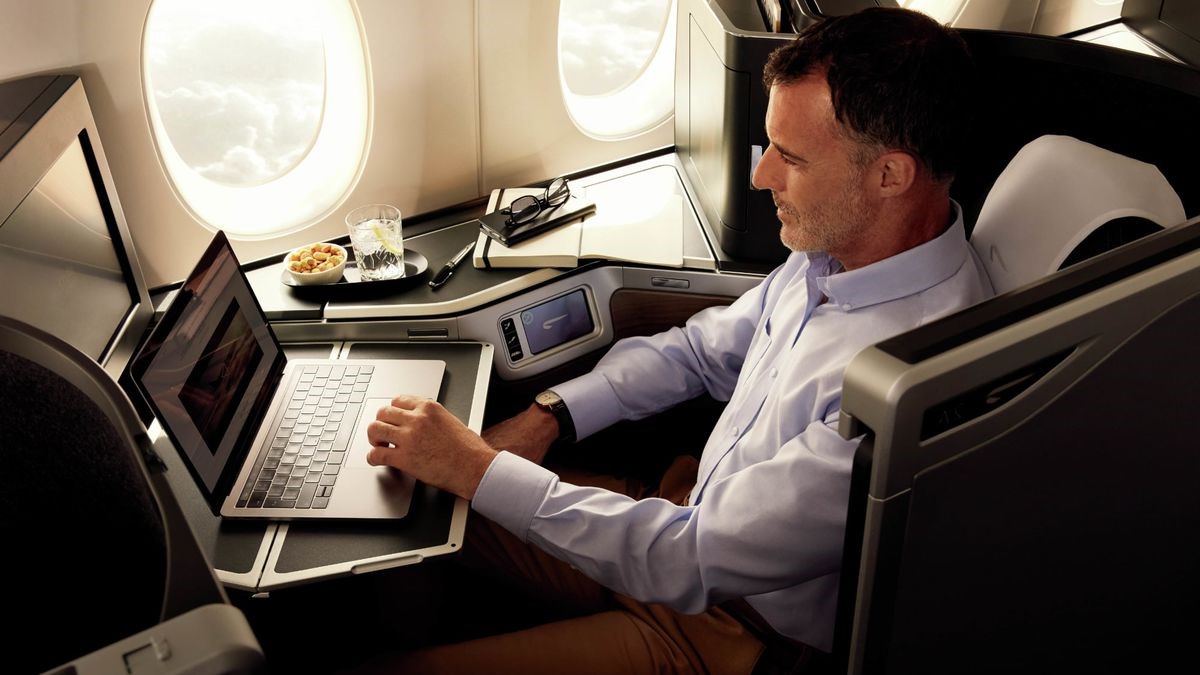
Ever wondered how you can browse the internet while flying at 35,000 feet? In-flight WiFi has transformed air travel, making it possible to stay connected even in the skies. This technology isn't just magic; it's a blend of satellites, ground stations, and advanced engineering. But how does it all work? From the moment you board to the time you land, a complex system ensures you can check emails, stream movies, or even video chat with loved ones. Curious about the nitty-gritty details? Let's dive into 16 fascinating facts about in-flight WiFi that will make you appreciate this modern marvel even more. Buckle up and get ready for a tech-savvy journey through the clouds!
Key Takeaways:
- In-flight WiFi has come a long way since 2004, with satellite and ground-based technology providing internet access at 35,000 feet. Some airlines even offer free WiFi, making it easier to stay connected and entertained while flying.
- Despite challenges like coverage gaps and security concerns, the future of in-flight WiFi looks promising. Advancements in technology, increased demand, and heavy investments by airlines are set to make in-flight WiFi a standard feature on most flights.
The Evolution of In-flight WiFi
In-flight WiFi has come a long way since its inception. Here are some fascinating facts about its journey and current state.
-
First In-flight WiFi Service: The first commercial in-flight WiFi service was introduced by Boeing in 2004. It was called Connexion by Boeing but was discontinued in 2006 due to high costs and low demand.
-
Satellite Technology: Modern in-flight WiFi relies on satellite technology. Satellites orbiting the Earth beam internet signals to the aircraft, allowing passengers to stay connected even at 35,000 feet.
-
Ground-Based Towers: Some airlines use ground-based towers for WiFi. These towers send signals to the aircraft, similar to how cell towers work for mobile phones. This method is often used for domestic flights.
How In-flight WiFi Works
Understanding the mechanics behind in-flight WiFi can be quite intriguing. Here’s a breakdown of how it all comes together.
-
Antenna on the Plane: Aircraft equipped with WiFi have an antenna installed on the fuselage. This antenna communicates with satellites or ground towers to provide internet access.
-
Bandwidth Limitations: The bandwidth available for in-flight WiFi is limited. This means that the speed can vary depending on the number of users and the type of activities they are doing online.
-
Latency Issues: Due to the distance signals must travel from the plane to the satellite and back, there can be a noticeable delay, or latency, in the connection.
Costs and Pricing
The cost of providing in-flight WiFi and how it’s priced for passengers is a topic of interest for many travelers.
-
High Operational Costs: Providing in-flight WiFi is expensive for airlines. The cost of installing and maintaining the necessary equipment can run into millions of dollars.
-
Pricing Models: Airlines use different pricing models for WiFi. Some offer it for free, while others charge by the hour or for the entire flight. Subscription plans are also available for frequent flyers.
-
Free WiFi on Some Airlines: A few airlines, like JetBlue and Norwegian Air, offer free WiFi to all passengers. This is often supported by advertising revenue.
Benefits of In-flight WiFi
In-flight WiFi offers numerous benefits to both passengers and airlines. Here are some key advantages.
-
Staying Connected: Passengers can stay connected with family, friends, and work while flying. This is especially important for business travelers.
-
Entertainment Options: In-flight WiFi allows passengers to stream movies, music, and TV shows, providing a more enjoyable flying experience.
-
Real-time Updates: Airlines can provide real-time updates on flight status, weather conditions, and connecting flights through WiFi.
Challenges and Future of In-flight WiFi
Despite its benefits, in-flight WiFi faces several challenges. However, the future looks promising with ongoing advancements.
-
Coverage Gaps: There are still areas, especially over oceans and remote regions, where WiFi coverage can be spotty or unavailable.
-
Security Concerns: In-flight WiFi networks can be vulnerable to cyber-attacks. Airlines must implement robust security measures to protect passengers' data.
-
Technological Advancements: Future advancements, like the introduction of 5G technology and improved satellite systems, promise faster and more reliable in-flight WiFi.
-
Increased Demand: As more passengers expect WiFi on flights, airlines are investing heavily in improving their in-flight connectivity services. This trend is likely to continue, making in-flight WiFi a standard feature on most flights.
Final Thoughts on In-flight WiFi
In-flight WiFi has transformed air travel, making it easier to stay connected while soaring above the clouds. From its humble beginnings to the advanced systems we use today, this technology has come a long way. Airlines now offer various packages, catering to different needs and budgets. Whether you're a business traveler needing to send emails or a casual flyer wanting to stream movies, there's something for everyone.
However, it's not without its challenges. Speed and connectivity can vary, and sometimes, the service can be pricey. But as technology continues to advance, these issues are likely to improve. So next time you're on a flight, give in-flight WiFi a try. It might just make your journey a bit more enjoyable.
Remember, staying connected at 30,000 feet is no longer a luxury—it's becoming the norm. Happy flying!
Frequently Asked Questions
Was this page helpful?
Our commitment to delivering trustworthy and engaging content is at the heart of what we do. Each fact on our site is contributed by real users like you, bringing a wealth of diverse insights and information. To ensure the highest standards of accuracy and reliability, our dedicated editors meticulously review each submission. This process guarantees that the facts we share are not only fascinating but also credible. Trust in our commitment to quality and authenticity as you explore and learn with us.


